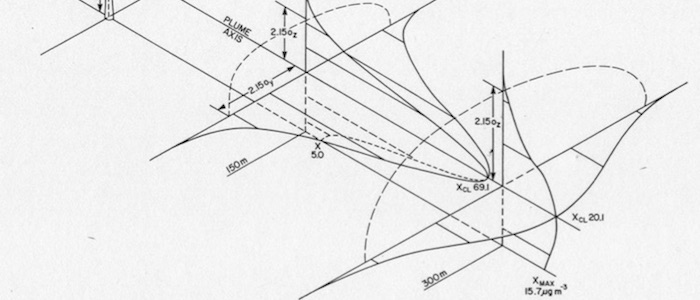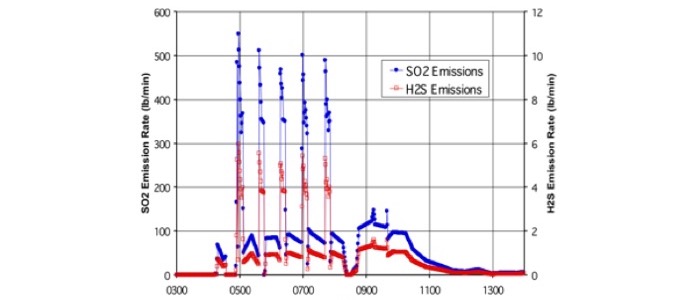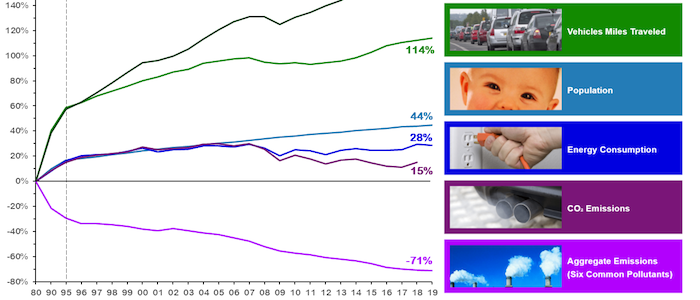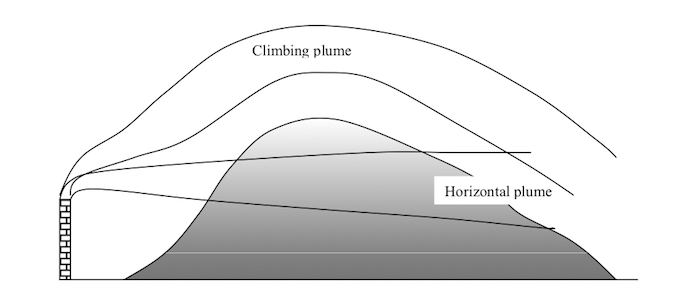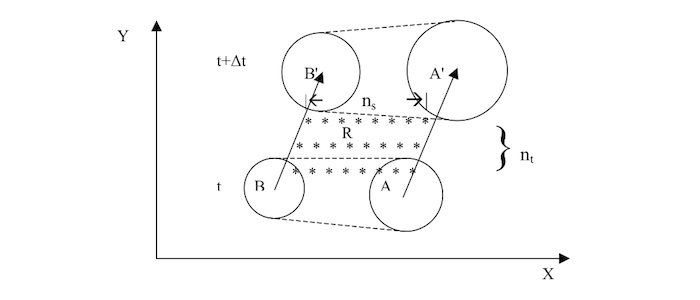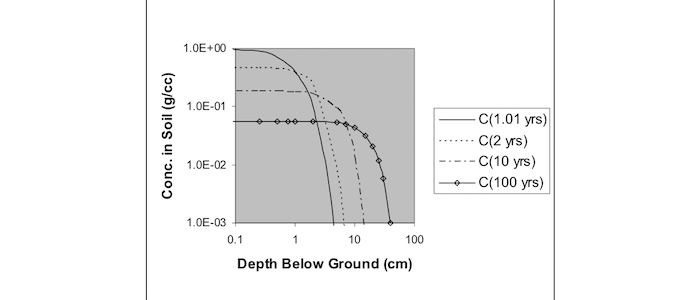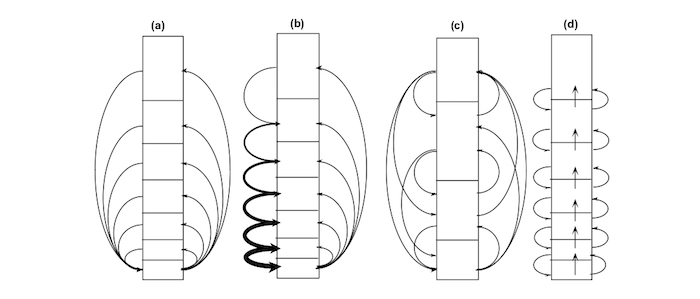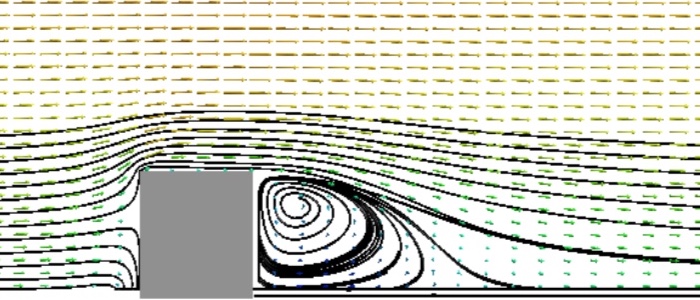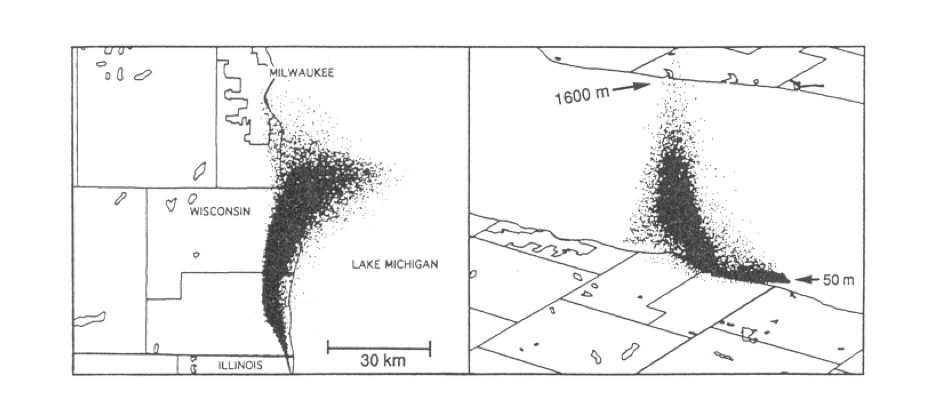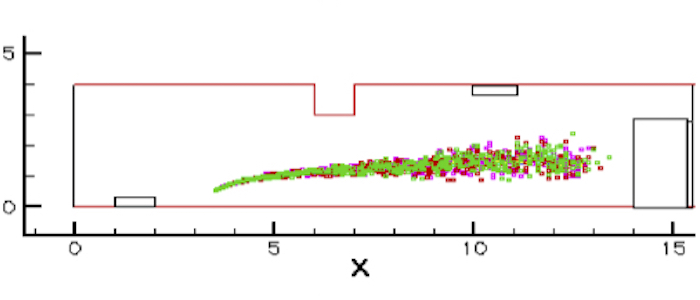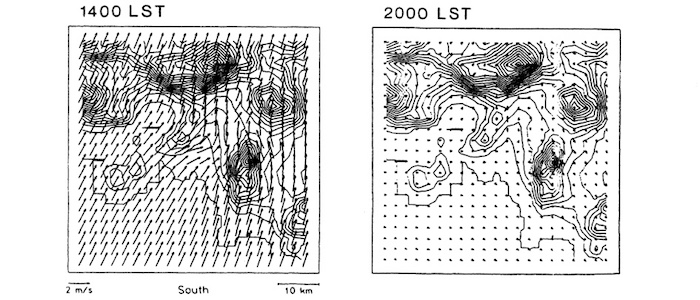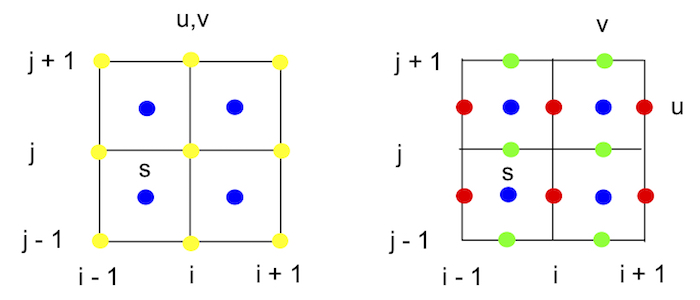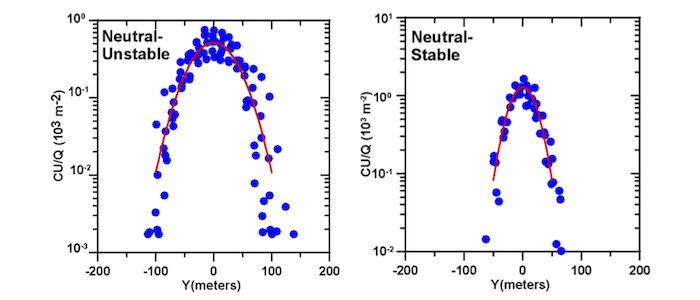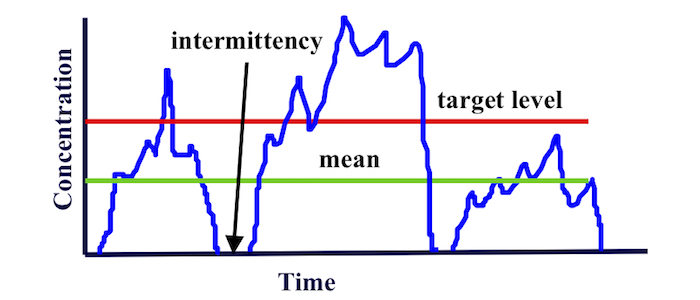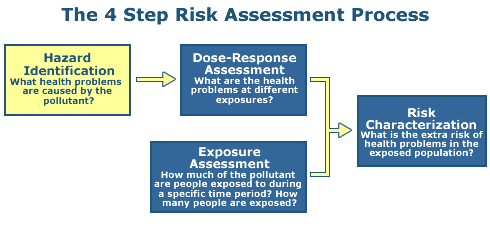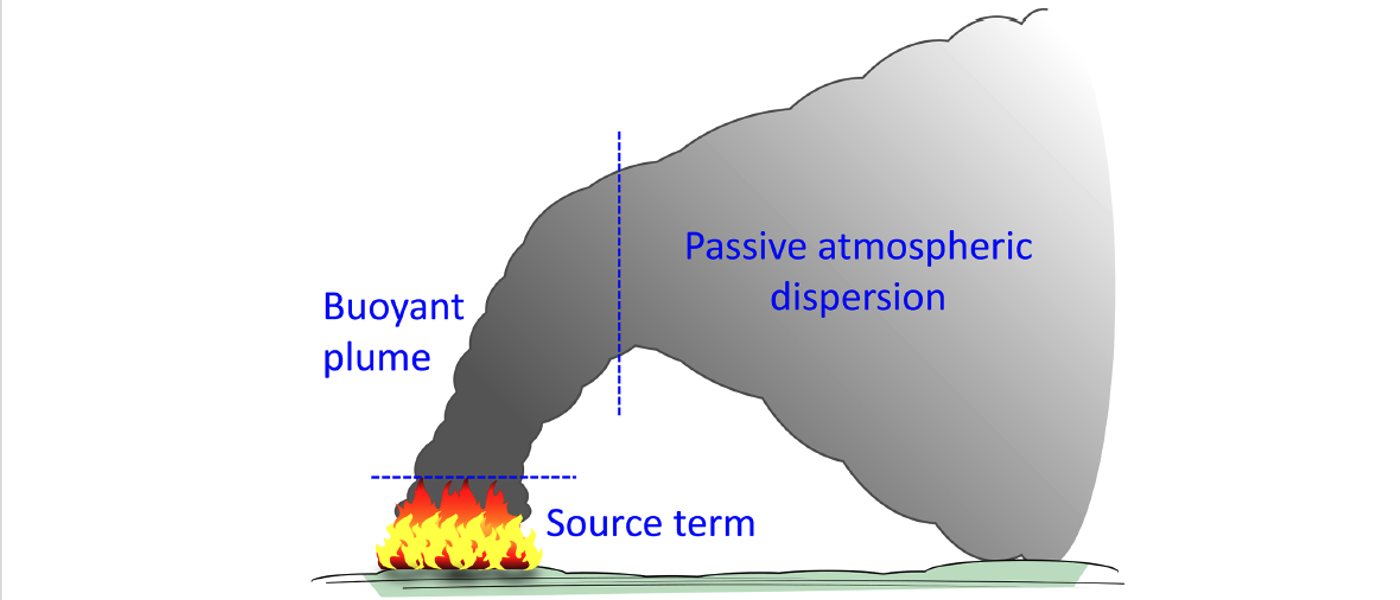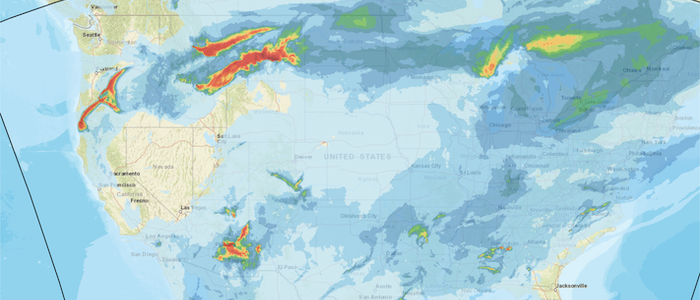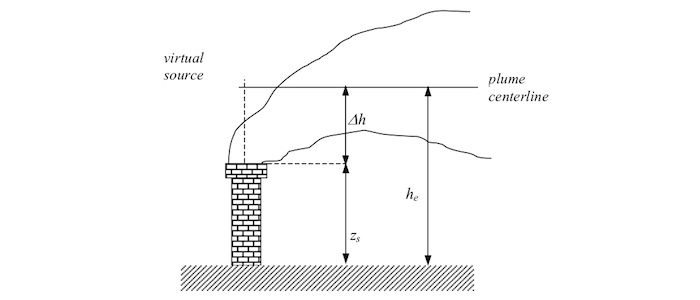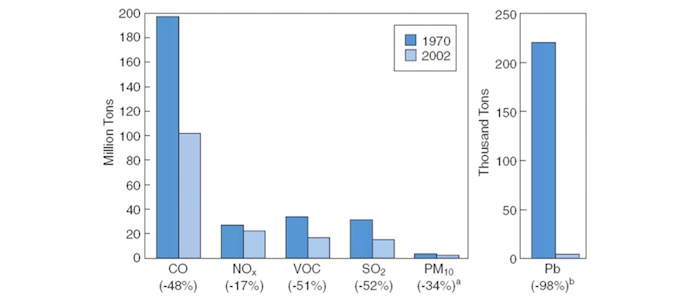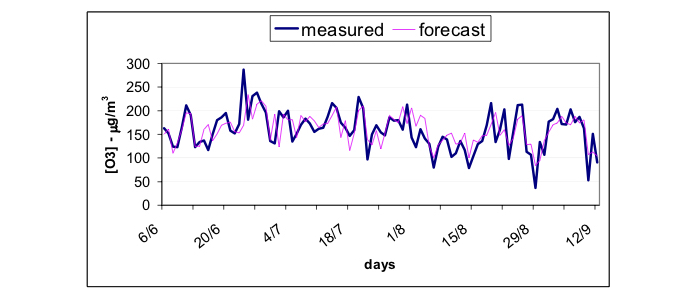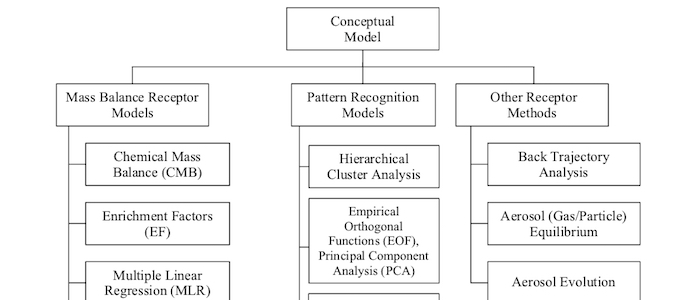Modeling
Modeling - Basic Overview
Air quality/pollution modeling is an indispensable tool for managing air quality. Modeling helps estimate the relationship between sources of pollution and their effects on ambient air quality. Air quality managers use models to identify source contributions to air quality problems and assist in the design of effective strategies to reduce harmful air pollutants.
Read More →Modeling - Intermediate Overview
Topics include uses of models (regulatory compliance and resolution of litigation), categorization of model by general type (Gaussian and grid-based), general governing equations, categories of model inputs, types of solutions of equations, alternative model formulations, spatial and temporal scales addressed and resolutions adopted, types of uncertainty of concern, experience and current and proposed approaches to evaluation of model performance, and data needs.
Read More →Modeling - Advanced Overview
The first comprehensive book on Air Pollution Modeling was published in 1990. Later, this book was expanded into a series of four multi-author volumes (Air Quality Modeling). The original 1990 book can still be used to provide a panoramic view of topics, equations, and numerical methods for air pollution modeling, together with a historical perspective.
Read More →Data Needs
Sources of meteorological observations, weather maps, and satellite imagery. Compiled by Ron Baskett.
Read More →Data Needs
The paper "Meteorological Data for Atmospheric Dispersion Modeling in Urban Areas" by Ronald L. Baskett, CCM discusses how meteorological measurements are used in modeling atmospheric releases in urban areas.
Read More →Data Needs
Resources for odor model input data and processing tools are described in Appendix A (page 363) of the International Handbook on the Assessment of Odour Exposure using Dispersion Modelling.
Read More →Uses of Models - Cost-Benefit
European Member States are obliged to develop and implement Air Quality Plans (AQP) to improve air quality and health. Notwithstanding the achievements in emission reductions and air quality improvement, additional efforts need to be undertaken to improve air quality in a sustainable way – i.e. through a cost-efficiency approach. This work was developed in the scope of the MAPLIA project “Moving from Air Pollution to Local Integrated Assessment”.
Read More →Uses of Models - Policy and Planning
Integrated assessment modeling (IAM) provides a suitable methodology to holistically address emission reductions for improving air quality, reducing exposure and protecting human health, by following the causal DPSIR (Driving Forces-Pressures-Sate-Impacts Responses) framework. A number of research efforts, such as the APPRAISAL FP7 project, have focused in reviewing current IAM practices deployed by different EU Member States for the development of local and regional air quality plans.
Read More →Use of Models - Legal Cases
Many legal cases around the world involve environmental issues and, in particular, air pollution problems. This is especially noticeable in the United States. Often, simulation models play an important role in these cases, for example when a chemical accidental release occurred and an expert is asked to assess the incident.
Read More →Use of Models - Preparedness and Response
A report authored by Michael Pirhalla, M.S., U.S. Environmental Protection Agency (US EPA) discusses Dispersion Modeling Systems Relevant to Homeland Security Preparedness and Response. The report includes a literature review and lists 96 dispersion models that could be used for emergency response to a wide-area release.
Read More →Emission Modeling and Inventory
The US EPA "AP-42: Compilation of Air Emission Factors" is one of the most complete and useful references to calculate emission data for a large set of activities and scenarios. It contains emissions factors and process information for more than 200 air pollution source categories.
Read More →Atmospheric Transformations
Atmospheric transformations encompass both physical and chemical changes of chemicals in the atmosphere. Modeling atmospheric transformations include gas phase chemical reactions, phase transitions, aqueous phase reactions, and processes involved in the formation of ozone, particulate matter, hazardous air pollutants, and halogen chemistry.
Read More →Atmospheric Transformations - Gas Phase
A set of introductory slides on gaseous pollutants has been provided, courtesy of Dr. Christian Seigneur. These slides are the basis of his 2019 book: Air Pollution - Concepts, Theory, and Applications.
Read More →Atmospheric Transformations - Aerosols
A set of introductory slides on atmospheric particles has been provided, courtesy of Dr. Christian Seigneur. These slides are the basis of his 2019 book: Air Pollution - Concepts, Theory, and Applications.
Read More →Deposition Phenomena
A set of introductory slides on transfer of pollutants between the atmosphere and surfaces has been provided, courtesy of Dr. Christian Seigneur. These slides are the basis of his 2019 book: Air Pollution - Concepts, Theory, and Applications.
Read More →Deposition Phenomena
Deposition phenomena are the way the atmosphere cleans itself by depositing chemicals on earth surfaces. This exchange process can be parameterized and modeled by simulating the turbulence characteristics of the atmospheric flow. These turbulence characteristics require specific parameterization procedures to take very different and complex environments into account.
Read More →Gaussian Models
Prof. Romualdo Salcedo has developed IMDIS - A Teaching Tool for Air Pollution Dispersion Modeling. This book intends to serve as a reference to follow-up on a better comprehension of air pollution modeling with the aid of hands-on user-friendly software, highlighting the main advantages (but also disadvantages) of using Gaussian dispersion as the main drive to teach this subject.
Read More →Gaussian Models
Both AERMOD and CALPUFF are air quality dispersion models widely used worldwide. Currently, AERMOD is the main dispersion model in the list of the preferred and recommended models by the US-EPA. CALPUFF was part of that list from 2003 to 2017, but now is listed as an “alternative model”.
Read More →Gaussian Models - Plume
Gaussian plume models are based on a simple mathematical formulation. The plume is assumed to travel horizontally and expand in the vertical and lateral (crosswind) directions. At each downwind distance the expansion of the plume is assumed to have a Gaussian distribution, and therefore to be described by the horizontal and vertical standard deviations of the distributions.
Read More →Gaussian Models - Plume
The Gaussian Plume Model is the most common air pollution formulation used throughout the world. Today, the preferred model in the US is the AERMOD Modeling System, as recommended by the US EPA. A simplified, easy-to-use Gaussian plume model is AERSCREEN. EPA models can be freely downloaded from the EPA site.
Read More →Gaussian Models - Puff
Since the 1980s, Gaussian puff models have provided an interesting and cost-effective approach, which maintains the basic Gaussian plume formulation, but allows dynamic, instead of steady state, simulations and permits the incorporation of three-dimensional meteorological inputs.
Read More →Gaussian Models - Special Applications
Gaussian models are routinely used to simulate air quality throughout the world. They exist in several forms, from a relatively simple equation, such as the straight-line stationary Gaussian plume, to other more complex formulations, such as Gaussian segmented plume and Gaussian puffs.
Read More →Eulerian Dispersion Models
Eulerian Models are typically described as models in which there is a fixed reference grid system and pollution concentrations are calculated at each time step and each point in the grid. They are different from Lagrangian models in which pollution elements (e.g., puffs or particles) are followed in time and space along their trajectories.
Read More →Eulerian Dispersion Models
Air pollution dispersion can be simulated using Computational Fluid Dynamics (CFD) methods, even though, in most cases, other models (e.g., AERMOD or CALPUFF) specifically developed for air pollution applications are used. The most useful CFD applications in air pollution seem limited to short range, complex studies, e.g., interactions with buildings, city canyons, plume rise.
Read More →Lagrangian stochastic models for odour dispersion
It is well known that knowledge about the mean concentration field is not sufficient in a wide range of cases, such as the dispersion of toxic, flammable and chemical reacting gases. Usually, further information about concentration fluctuations, e.g. by determining the concentration variance, is needed.
Read More →Lagrangian Particle Models
In a Lagrangian stochastic model (LSM), also called Lagrangian Particle or Random Walk model, the motion of air masses or particles passively following the flow is studied. To simulate the presence of turbulent eddies, particle velocities are subject to a random forcing.
Read More →Indoor Air Pollution Modeling
Emission of pollutants and their accumulation due to poor ventilation and air exchange are serious problems that are currently under investigation by many researchers. Recent concerns include indoor spreading of viruses and the use of indoor modeling to properly design ventilation in hospitals and public indoor areas.
Read More →Inverse Dispersion Modeling - Methane Emissions
This study investigated the potential role of inverse dispersion modelling techniques in quantifying whole-site routine methane emissions from facilities regulated by the Environment Agency.
Read More →Meteorological Modeling - Similarity Theory
The similarity theory describes atmospheric turbulence in the thermally stratified surface layer.
Read More →Meteorological Modeling - Diagnostic Models
Diagnostic models are different from prognostic models in the sense that diagnostic models develop an estimate of three-dimensional wind and temperature fields using interpolation/extrapolation of available measurements in the region of interest.
Read More →Meteorological Modeling - Coupling Meteorological and Air Quality Models
The coupling of meteorological and air quality models is important to assure that air quality dispersion models take full advantage of the three-dimensional data simulated by meteorological models (e.g., wind vectors).
Read More →Model Evaluation and Uncertainty
Model evaluation is a collection of activities one should perform in order to understand how a model behaves and how a model compares with observations. One of the elements of model evaluation is statistical model evaluation.
Read More →Modeling of Adverse Effects
When one publishes risk assessment results, it is necessary to clarify that these estimates are very uncertain and conservative, and to underline that these estimates should be used for relative instead of absolute evaluations.
Read More →Modeling of Adverse Effects
With much of the world's population residing in urban areas, an understanding of air pollution exposures at the city level can inform mitigation approaches. We aimed to estimate trends in fine particulate matter (PM2·5) concentrations and associated mortality for cities globally.
Read More →Modeling of Adverse Effects - Odor Modeling
Odor modeling presents some challenges. In fact, models used for air quality compliance purposes calculate fixed time-averaged concentrations that can be directly compared with ambient air quality standards and criteria (generally with 1-hour to 1-year averaging times). Odors, on the other hand, can be recognized on the order of seconds or minutes.
Read More →Modeling of Adverse Effects - Odor Modeling
Odor dispersion algorithms, output dose-response, and other approaches are described within Sections 5 - 7 (pages 152 - 344) of the International Handbook on the Assessment of Odour Exposure using Dispersion Modelling.
Read More →Modeling of Adverse Effects - Stratospheric Ozone
A set of introductory slides on the stratospheric ozone layer has been provided, courtesy of Dr. Christian Seigneur. These slides are the basis of his 2019 book: Air Pollution - Concepts, Theory, and Applications.
Read More →Modeling of Adverse Effects - Health Risk Assessment
The American Industrial Hygiene Association (AIHA) has created a site which offers a variety of free e-tools to assist practitioners in enhancing their exposure assessment capabilities. These tools cover Data Collection, Basic Exposure Assessment Characterization, Preliminary/ Initial Exposure Assessment (Tier 1), Refined Assessment (Tier 2), and Refining/Validating the Exposure Assessment.
Read More →Modeling of Adverse Effects - Visibility Impairment
A set of introductory slides on atmospheric radiation and visibility has been provided, courtesy of Dr. Christian Seigneur. These slides are the basis of his 2019 book: Air Pollution - Concepts, Theory, and Applications.
Read More →Modeling of Pesticide Application, Deposition, and Drift
Applied modeling techniques are available to simulate ground spraying and aerial spraying of pesticides. One of the most important applications of these models is related to concerns about off-target drift of aerially applied pesticide sprays. Droplets depositing off-target are a waste of material and, more importantly, can damage nearby agricultural fields.
Read More →Fire Plume Modeling - Basic Overview
Two fire plume modeling approaches are the Fire Dynamics Simulator computational fluids dynamics model developed by the U.S. NIST, and the BUOYANT steady-state air pollution dispersion model developed by the Finnish Meteorological Institute.
Read More →Fire Plume Modeling - Intermediate Lecture
Dr. Frank Freedman provided this lecture on fire plume modeling as part of the Wessex Institute 2023 Short Course on Introduction to Air Pollution Modeling.
Read More →Modeling Wildfire Smoke
Multiple U.S. government agencies and academic research groups have created or adapted existing modeling systems to track the transport of wildfire smoke. A few examples include NOAA's High-Resolution Rapid Refresh Smoke Modeling System, NOAA's HYSPLIT-based Emissions Inverse Modeling System, and WRF-SFIRE.
Read More →Plume Rise
The initial phase of a chemical emission, characterized by temperature higher than the surrounding air and/or by an initial vertical velocity, is creating conditions for an initial rise of the plume. The rise stops when the plume becomes in equilibrium with the surrounding air. Almost all air quality models include special calculations for the simulation of the plume rise.
Read More →Regulatory Modeling
Regulatory modeling is the science related to the development and use of agency-approved computer models for specific regulatory purposes. The main approach in regulatory modeling is the identification of proper simulation tools and default assumptions to assure a uniform and fair application of air quality laws and regulations.
Read More →Statistical Modeling - Forecast and Alarm Systems
Statistical and stochastic models can be used to predict critical pollutant concentrations both in industrial and urban areas. Statistical models are generally useful when the information available from measured concentration trends is more relevant than the one obtained from the deterministic analyses.
Read More →Statistical Modeling - Receptor Models
Receptor models are mathematical or statistical procedures for identifying and quantifying the sources of air pollutants at a receptor location. Unlike photochemical and dispersion air quality models, receptor models do not use pollutant emissions, meteorological data and chemical transformation mechanisms to estimate the contribution of sources to receptor concentrations.
Read More →Statistical Modeling - Neural Networks
There has been a growing attention in recent years on the use of artificial neural networks (ANNs) in predicting and forecasting ambient air pollution, since poor air quality in urban areas has been linked to chronic diseases and premature mortalities.
Read More →Comprehensive Modeling Systems
Decision making in the field of air quality and greenhouses gases reductions can nowadays be supported by a clear overall framework and by computer tools that integrate the most relevant aspects of the problem. The general Drivers, Pressures, State, Impacts, Responses (DPSIR) scheme proposed by the European Environment Agency can be adapted to the specific case of local air quality policies.
Read More →